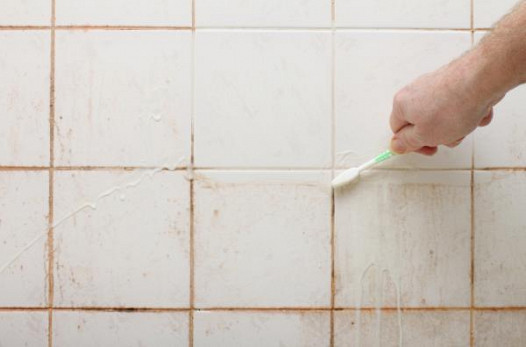Exactly how to Fix as well as Prevent Bathroom Water Damage
Exactly how to Fix as well as Prevent Bathroom Water Damage
Blog Article
Nearly everybody maintains their own individual views involving How to Prevent Bathroom Water Damage.

The shower room is exceptionally at risk for wet accumulation as well as possible water damage because of the constant use water in it. This article uses straightforward assessment methods to aid identifying water damages threats.
The frequent use of water in the restroom makes it incredibly prone for wet buildup and possible water damages. By inspecting it frequently, you can minimize water relevant problems.
The following collection of examinations is very easy to execute and also should be done once in every three months in order to keep your restroom healthy and to prevent potential water damages triggered by the bathtub, the shower, pipe joints and plumbing, sinks, cabinets, and the toilet
Do not neglect executing these inspections and be thorough while executing them. Remember that these straightforward examinations can conserve you a great deal of cash by supplying early indications for water damage
Bath tub and also Shower
The shower and also bath tub need special interest and maintenance. Examine the floor tiles and also change if split. Ensure that there is no missing cement in between the ceramic tiles. Inspect and change fractured caulking at joints where the wall surfaces satisfy the floor or the bathtub. Obstructed drains and pipes troubles will prevent the bath tub from drying and might suggest major problems beneath the tub. Speak with a professional quickly to avoid structural damages. Take note of stainings or soft locations around the bathtub walls as they might show an inner leakage.
Plumbing
Signs for water damages are hard to detect given that many pipes are mounted inside the walls.
Pay special focus to flooring and wall surfaces moisture and also spots as they may show an undetectable plumbing problem. Examine wetness degrees in adjacent rooms too.
Sinks and Cabinets
Sinks as well as cabinets are subjected to moisture and also humidity day-to-day as well as are often ignored. Inspect consistently under the sink as well as on the kitchen counter above it. Fix any drip in the catch as it may suggest drainpipe issues. Look around the sink, sluggish draining pipes may show a blocked drainpipe. Replace sink seals if they are split or loosened.
The Toilet
The bathroom is an at risk water junction. Inspect the water lines and also search for leaks around the commode seat, in the hose, as well as under the water storage tank. If you identify any indications of dampness on the floor around the toilet, check for leaks in the toilet rim and also container seals.
Know that hanging toilet dish deodorants raises the opportunities for blockages.
10 TIPS TO PREVENT WATER DAMAGE IN THE BATHROOM
The average household uses approximately 80-100 gallons of water per person per day. For a family of 4, that's almost 2,500 gallons of water a week! The largest portion of this consumption comes from bathroom use. Flushing the toilet uses the most water, followed by taking a shower or bath. With that much water running through the home, water damage in the bathroom is bound to happen. Knowing how to spot signs of a water leak is essential to preventing long-term damage. This guide provides you with tips to reduce the impact of water damage on your bathroom.
CAUSES OF BATHROOM WATER DAMAGE
Pipe breaks are the most common cause of water damage we see in our daily jobs. The age of a pipe plays a large role in a pipe break as well as corrosion. Over time, the metal begins to break down, allowing water to escape. Frozen pipe breaks are also a concern in the winter months. Toilet overflows caused by paper products or children flushing inappropriate items. Degraded caulking around the toilet or bathtub can allow water seepage, sometimes behind the fixture, into the subfloor or walls. Condensation forms when the water in a pipe is cooler than the air temperature. Beads of water form on the exterior of the pipes, sometimes so much so that the water begins to drip and pool below. Sink or shower backups created by poor drainage. HOW TO PREVENT WATER DAMAGE IN YOUR BATHROOM
Inspect your toilet supply line for worn or frayed hoses and replace them as needed. Winterize your plumbing to prevent a frozen pipe break. Use vent fans to prevent condensation that can lead to mold growth. Routinely check and replace degraded caulking around your toilet or bathtub. Increase the temperature in your toilet tank and insulate your pipes during the warm summer months to keep condensation from forming. Use child safety locks on the toilets. Flush only toilet paper. "Flushable" wet wipes are actually not good for your plumbing system. Additionally, feminine hygiene products should not be flushed. Prevent water from escaping the tub or shower. Make sure shower curtains are in good condition. Inspect shower doors and replace the seal strip if necessary. Wipe up any water that accumulates on the floor and use bath mats. Water left to sit can cause damage to the tiles and flooring. Refrain from using bath products containing heavy oils to avoid a clogged drain.

We hope you enjoyed reading our section about Preventing Water Damage in the Bathroom. Thanks a ton for finding the time to browse our posting. For those who liked our blog entry plz be sure to share it. Thanks for your time. Come back soon.
Website Report this page